The evergreen boxwood is widespread and very popular in almost all countries of North America, Asia and Europe. This evergreen shrub is prized for its dense, beautiful crown that is easy to shape. With the help of boxwood (box), lawns are framed, backstage, curbs, hedges are created.
Owners of household plots widely use it as a decorative element of a garden, front garden or summer cottage. This is due to the fact that the shrub is frost-resistant, tolerates a haircut well and is unpretentious in cultivation and care.
Content
Description, types and photos of boxwood
Boxwood is an evergreen shrub that can be from 2 to 10 meters... It has become an indispensable element of interior design because of its decorative crown and slow growth. For a year, the bush can grow by only 5-6 centimeters.
Boxwood is distinguished by its dark green oval leaves. By rubbing them into your hand, you can smell a rather strong smell. Unisexual plant flowers are very small and inconspicuous in size. From them in October, fruits are formed, which are a round box. Small cracks appear on the grayish-yellow bark of the boxwood with age.
Boxwood in nature there are more than 30 types, each of which has unique qualities and finds its application in landscape design.
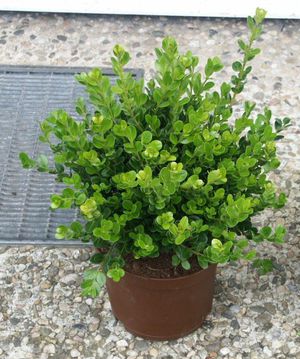 Buxus Faulkner microphylia has a natural spherical crown. Prefers fertile soil saturated with trace elements, regular watering. Grows well in sunny and semi-shady places.
Buxus Faulkner microphylia has a natural spherical crown. Prefers fertile soil saturated with trace elements, regular watering. Grows well in sunny and semi-shady places.- Boxwood Winter Gem microphylia is a fast growing plant with small leaves that lends itself well to forming. Loves partial shade and sun, regular watering, fertile soil. Ideal for edging flower beds and topiary work.
- Arborescens has fleshy, ovoid, dark green leaves and a dense crown. Feels good in shade on drained calcareous soils.
- Blauer Heinz Buxus is a squat, slow-growing plant with bluish leaves. Differs in upward growing shoots and frost resistance. It is used to form curly ornaments, low borders, “rugs”.
- Boxwood Suffruticosa has ovoid leaves and an upright crown. The variety is frost-resistant. Suitable for the formation of medium-sized hedges.
- Sempea is the most common type of boxwood in our country. It tolerates cold winters well and is easy to trim. Various shapes can be formed from it.
- Buxus colchica is listed in the Red Book of the Russian Federation. This Caucasian variety is characterized by slow growth, small fleshy leaves and high frost resistance.
In indoor conditions, boxwood evergreen can be grown like bonsai. Perfect for this cultivar "Buxus harlandii Hance"... The slow growth of the shrub and its small leaves make it possible to create true miniature masterpieces.
Planting boxwood
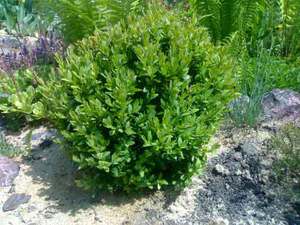 No special knowledge and skills are required for planting the buxus. Young plants are recommended to be planted in the fall season.Bushes aged three years and older are transplanted from early spring to late autumn.
No special knowledge and skills are required for planting the buxus. Young plants are recommended to be planted in the fall season.Bushes aged three years and older are transplanted from early spring to late autumn.
When purchasing seedlings, it is best to opt for a container option. Shoots and leaves should be green, the crown is lush. Leaves with yellow spots they say that the plant is sick and will soon die.
Planting should be carried out on a cloudy day in pre-prepared pits, which should be twice the volume of the horse system. The bottom of the pit must be covered with turf soil, leaf humus and sand (2: 4: 1). Potassium fertilizer can be added.
The seedling is placed in the hole very carefully. The roots are straightened, covered up and compacted. A depression is formed around the trunk and the plant spills. It is recommended to mulch the soil around the plantings with agrofibre or coniferous bark.
So that the bushes grow strong and densely leafy, the soil for them should be:
- well drained;
- breathable;
- loose;
- nutritious;
- with neutral acidity;
- loamy.
Evergreen boxwood can grow on poor soils. Wherein the crown will be dense and thick, but its growth will slow down noticeably. Therefore, it is recommended to add compost and hydrated lime to such soils.
It is best to temporarily bury the buxus seedlings purchased in November in a shady leeward place of the garden, sprinkling with light permeable soil. In winter, they will need to be covered with snow. The bushes are planted in a permanent place in April.
Correctly planted plants take root within three weeks. After that, you can start cutting the bushes. This is necessary not only to obtain a beautiful shape, but also to increase root growth, and a good increase in green mass.
Features of caring for boxwood evergreen
Shrub maintenance is simple enough, however has its own characteristics and nuances.
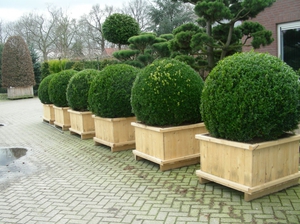 Temperature. The plant tolerates frost well, but at temperatures below -20C it can die. Therefore, at the end of autumn, it is recommended to wrap the bushes with a material that will be able to protect them from sunlight and wind on frosty days. For regions with harsh winters, it is better to choose frost-resistant varieties and plant them in semi-shaded places.
Temperature. The plant tolerates frost well, but at temperatures below -20C it can die. Therefore, at the end of autumn, it is recommended to wrap the bushes with a material that will be able to protect them from sunlight and wind on frosty days. For regions with harsh winters, it is better to choose frost-resistant varieties and plant them in semi-shaded places.- Lighting. Boxwoods must be protected from sunlight. For trees planted in open sunny areas, an artificial shade is created, which will protect the leaves from burns. Buxus trees tolerate shade well and grow well next to other trees.
- Watering. The trees planted on the site need watering only in summer. In dry weather, they need to be watered every month. In this case, around the plant, you need to loosen the ground as often as possible. During each watering, it is recommended that the bushes take a shower to wash off the settled dust from their leaves. A short shower will also have a beneficial effect on the rooting of seedlings.
- Fertilizer. For good growth and development of boxwood, it is recommended to use special formulations for evergreens. In spring, plants are fed with complex fertilizers containing phosphorus, potassium and nitrogen, and in autumn - with superphosphate and potassium salt. Concentrated fertilizer solutions can damage the root system, so it is best to apply them dry, evenly spreading around the trunk.
- A haircut. To give the bushes the required shape, a haircut is carried out two to three times a year. This should be done with a pruner or garden shears. The more often trees are trimmed, the better they will need to be watered and fertilized to replenish the loss of nutrients.
Caring for boxwood at home
Buxus as a room culture is quite capricious. Therefore, it is necessary to take care of him at home. following some rules.
- The place for the plant should be chosen bright, but without direct sunlight. It is best to grow boxwood near the western and eastern windows.
- Watering should be regular. The plant is watered in small doses and sprayed from the aerator.Make sure that no water accumulates in the pan. This can lead to decay of the root system.
- In winter, the optimum temperature for the bucket is 6-10C. For this, the plant pot can be placed next to the glazed balcony door, or placed between double frames. Watering in winter is reduced to a minimum.
- Boxwood is transplanted every 2-3 years. This should be done carefully. In order not to damage the roots, the plant is taken from the old pot with a lump of earth.
- You can trim indoor bushes throughout the year.
Reproduction of boxwood
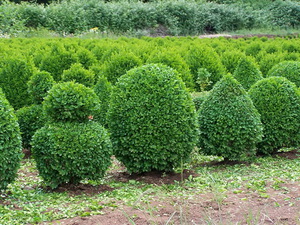 Boxwood reproduce by cuttings, which are harvested from late June to mid-July. For this, young shoots with three internodes, lignified at the base, are selected.
Boxwood reproduce by cuttings, which are harvested from late June to mid-July. For this, young shoots with three internodes, lignified at the base, are selected.
Cuttings cut into two internodes with two upper leaves are immersed in a mixture of peat and garden soil. Only leaves should remain on the surface. To create a greenhouse effect, the cuttings are covered with foil or glass jars. The container is placed in a warm, bright place, but not in direct sunlight. Watering should be frequent, but not plentiful.
After about a week the cuttings begin to take root and sprout... At this time, they will need to be seated in separate containers. Young plants are planted in open ground in the first days of September. Before frost, they should have time to take root well. For the winter, the seedlings are covered with a covering material, since young box trees are afraid of frosts below -15C.
Boxwood diseases and pests
Of great importance in caring for the buxus is its protection from pests and the prevention of diseases. With proper care, there should be no problems, but the most common hazards should be examined.
Of pests, boxwood can suffer from moths, leaf fleas, or gall midges.
- The fire moth is a moth that can infect large areas with green shrubs. Its caterpillars entangle shoots and leaves with cobwebs, provoking drying out of parts of a plant or a whole bush. When foliage changes color, boxwood should be checked for moth caterpillars. Infected trees are treated with special preparations.
- The leaf flea gives the leaves a white color and folds them over. The affected leaves must be removed, and the crown must be treated with mineral oil.
- Gall midge is manifested by nodular swellings below the leaf and yellow spots above. The leaves dry up and die off. In this case, regular pruning and chemical treatment is required.
Among the most common boxwood diseases are the leaf-loss Cylindrocladium buxicola and the shoot-necrosis Volutella buxi. In both cases pruning of infected branches is required and shoots. Fungicide treatment does not cope with diseases. But it can be used as a preventive measure.
Boxwood in landscape design
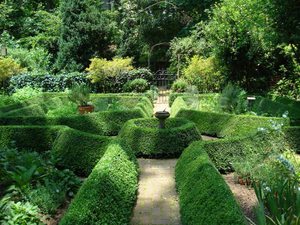 In landscape design, buxus is very popular as a hedge, green curtains, framing ridges and flower beds. From its bushes you can make geometric shapes and all kinds of shapes.
In landscape design, buxus is very popular as a hedge, green curtains, framing ridges and flower beds. From its bushes you can make geometric shapes and all kinds of shapes.
Plants can be shaped like a pyramid, ball, cone, or oval. They can be used to decorate front gardens, paths and flower beds.
High varieties of boxwood, which include "Rotandifolia" and "Latifolia", used to form hedges... The “Handorthiensis” variety is distinguished by its unusual strength. It looks original and beautiful as a backstage against which roses bloom.
It is better to plant a buxus for a hedge in the spring. For this, pits are prepared, the distance between which should be 30-40 centimeters. The sprouts are removed from the container, placed in a prepared hole, covered with soil and watered.
Boxwood in a flowerbed in combination with geyhera will look good. By placing a shrub with red leaves in the central part, boxwood can be planted around the edges. Against the background of its greenery, Heuchera will contrast and stand out favorably.
If a form a shape out of boxwood or you yourself do not succeed in the composition, then you can always use the services of professionals, or buy a ready-made, original plant.
Subject to all the rules for planting and caring for boxwood, the plant will delight you with its beauty for many years. And the hedges, forms and figures formed from it will decorate your personal plot to the envy of all neighbors.
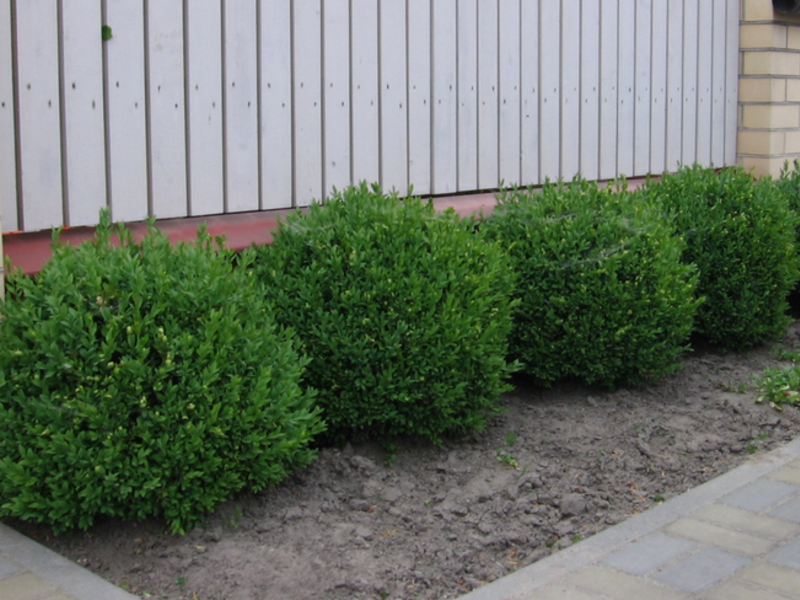
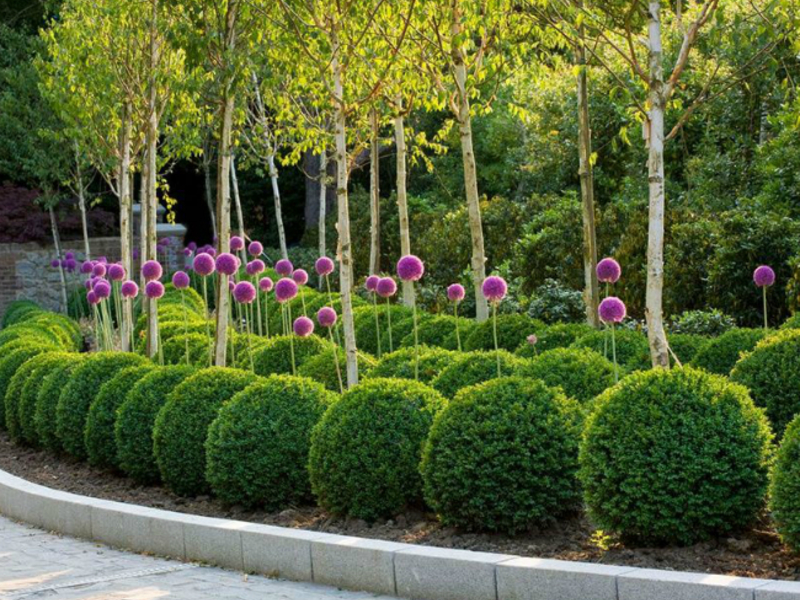
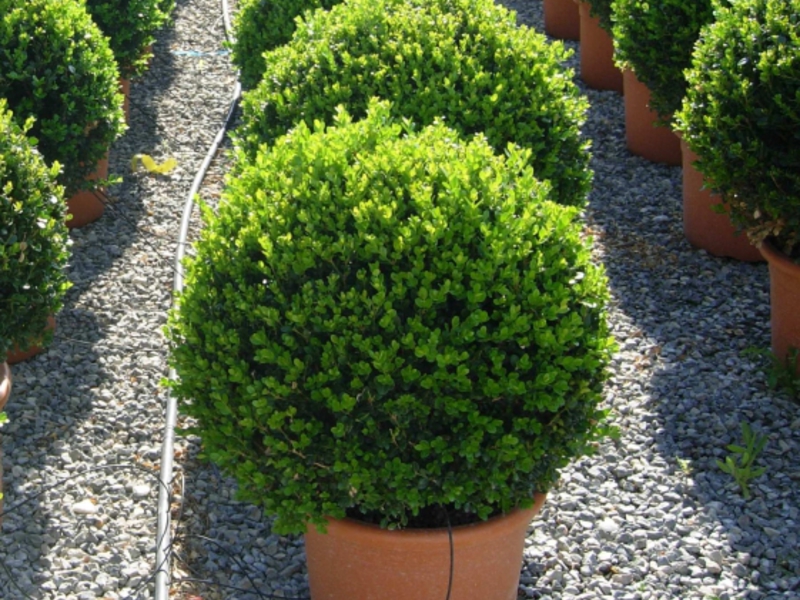
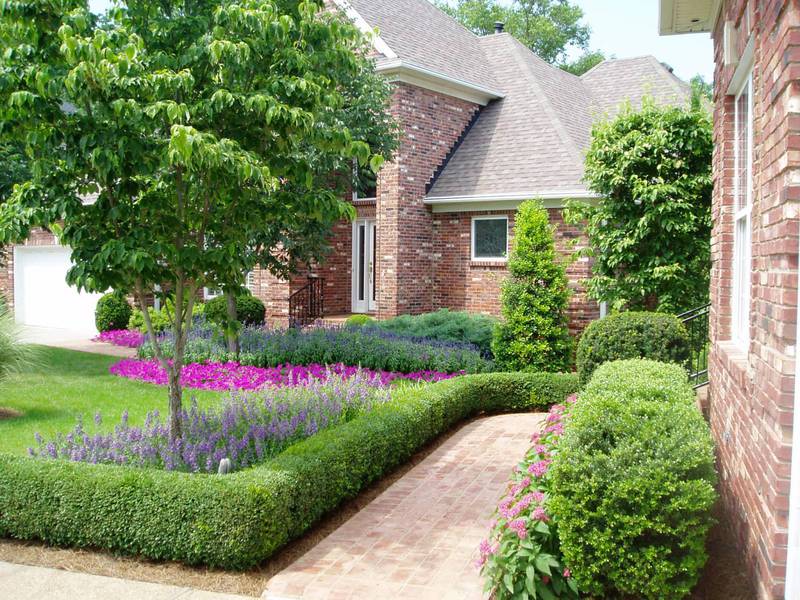
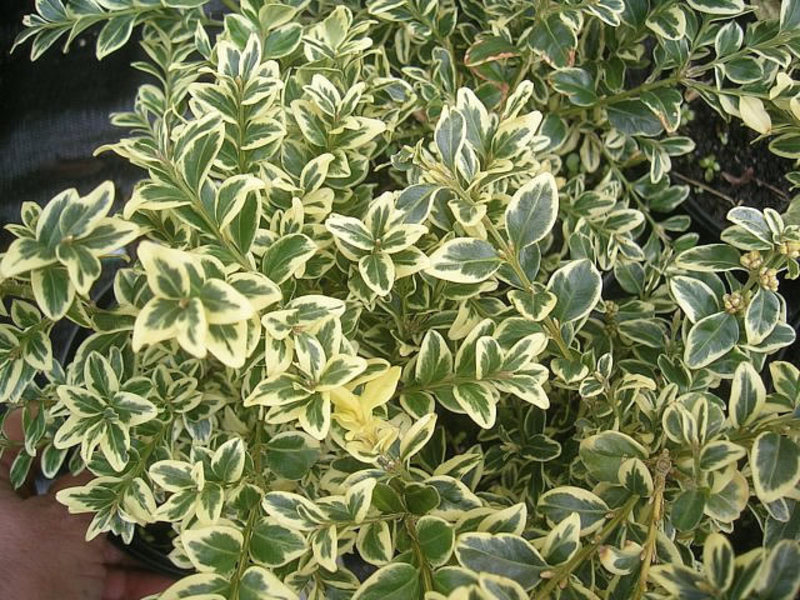

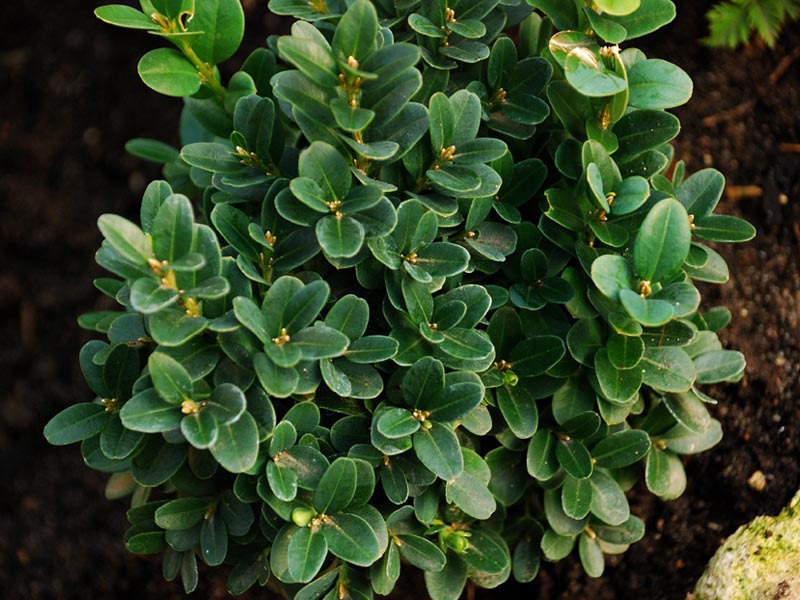
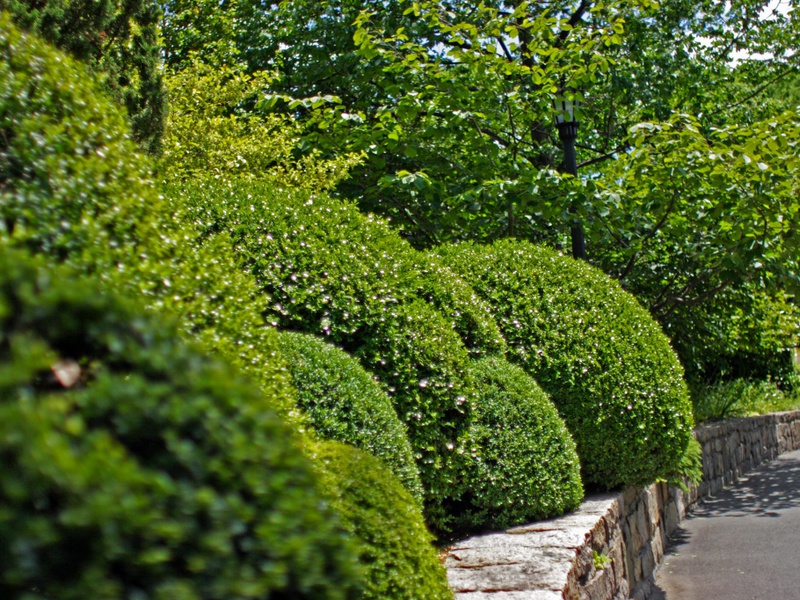
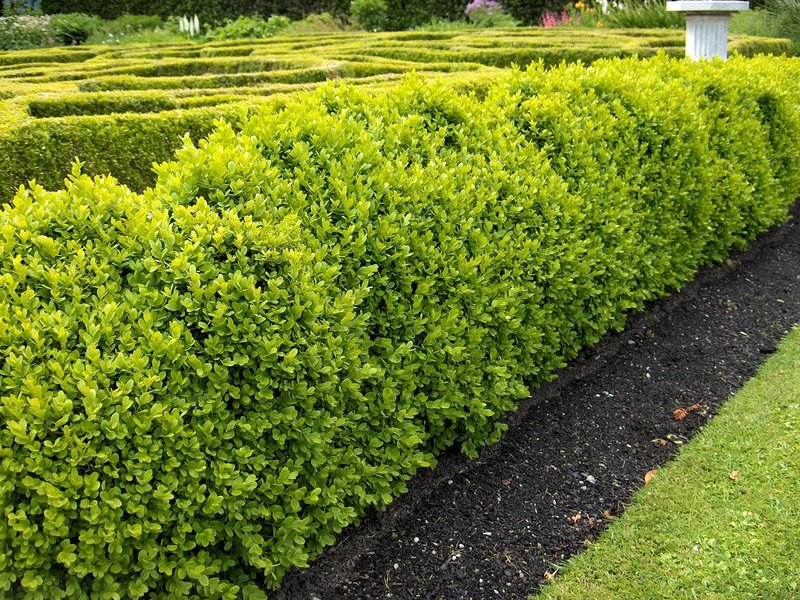
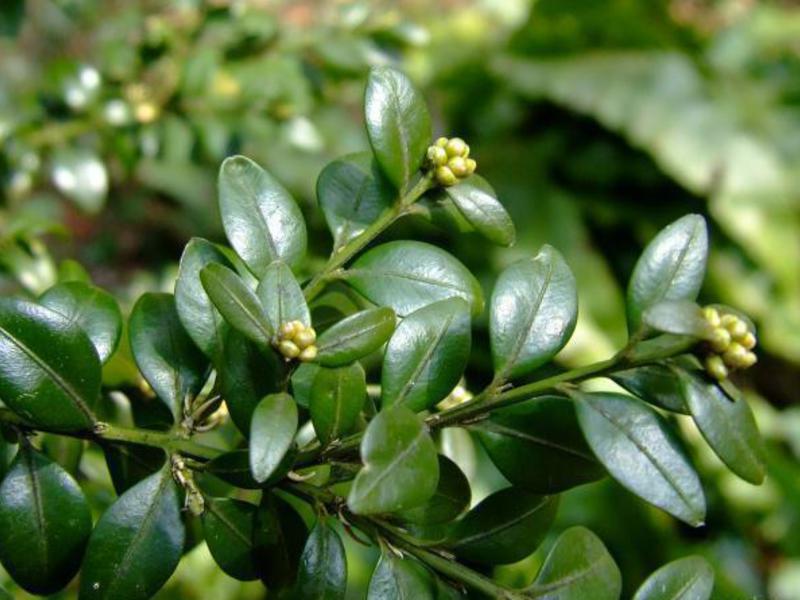

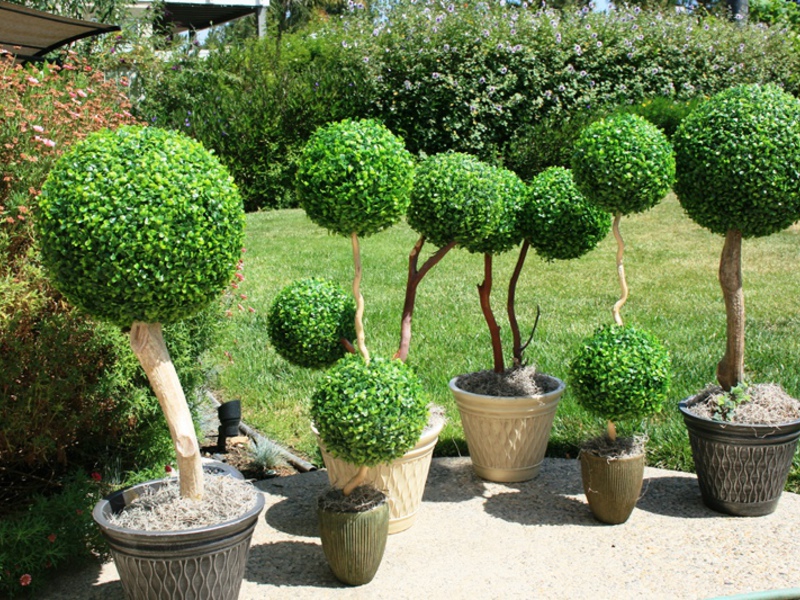
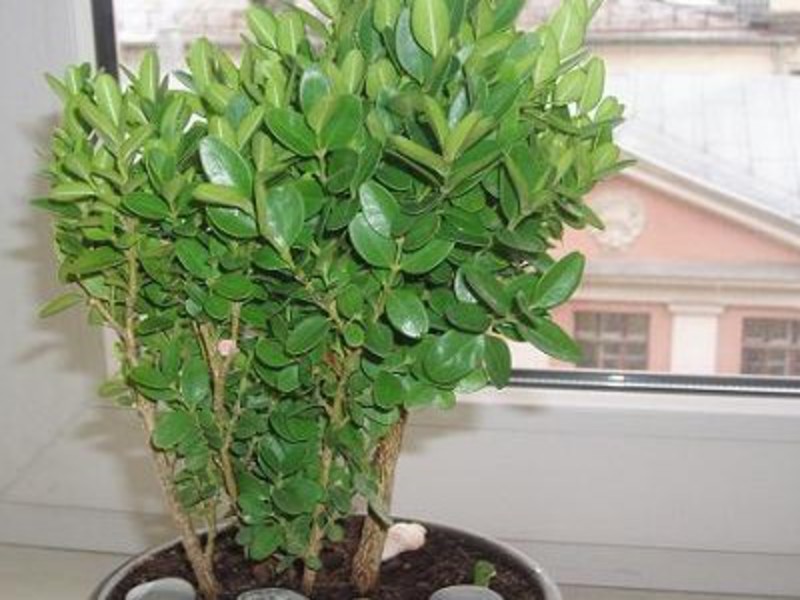
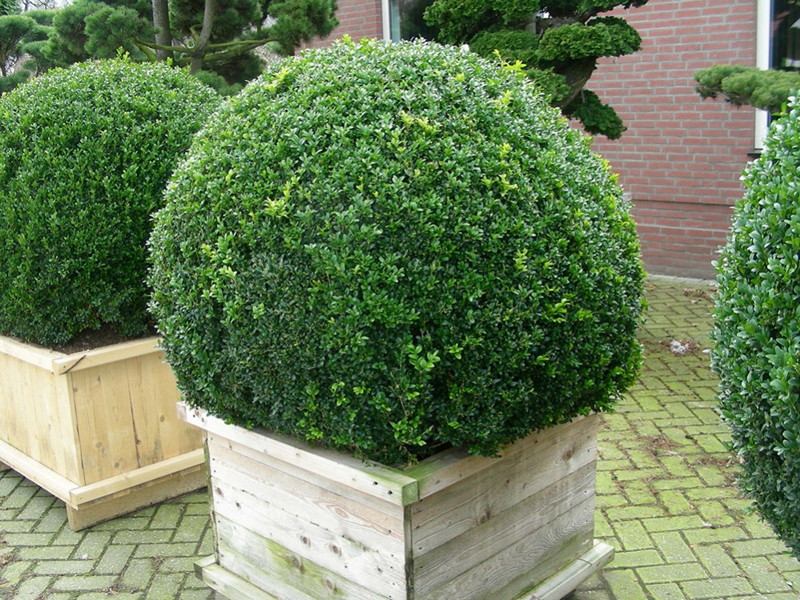
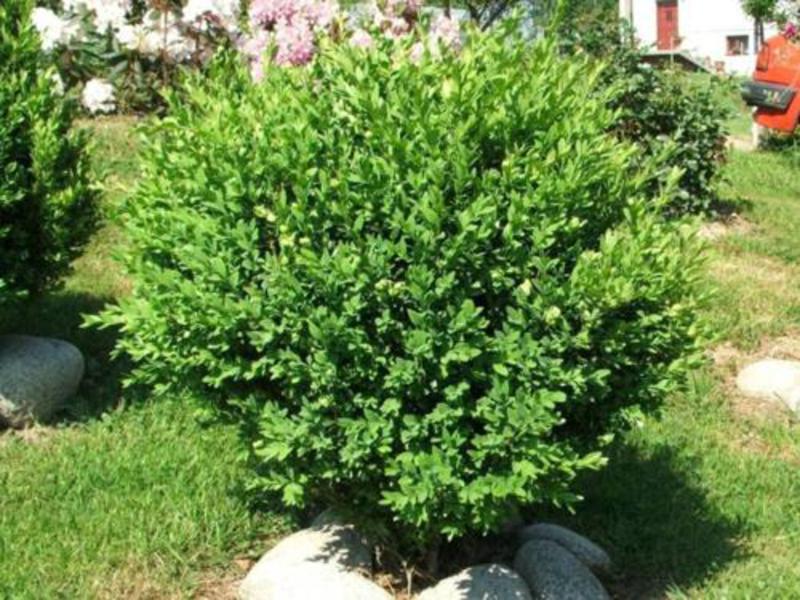
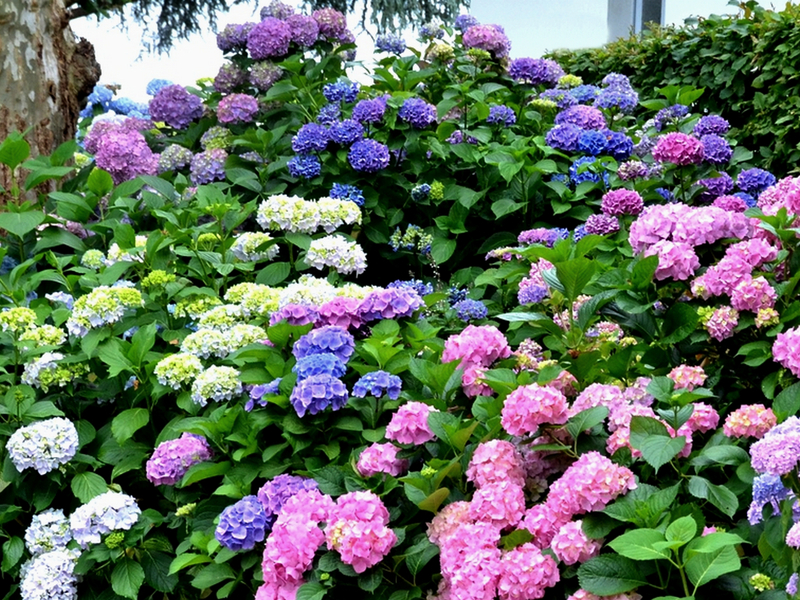
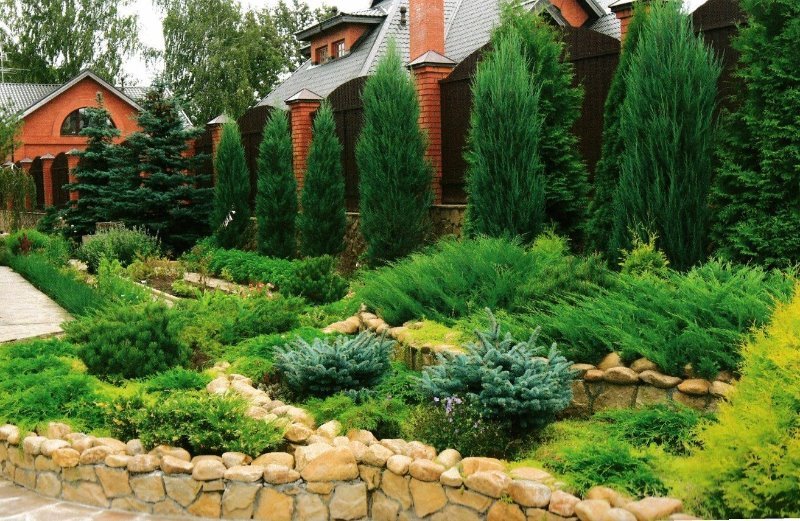

1 comment